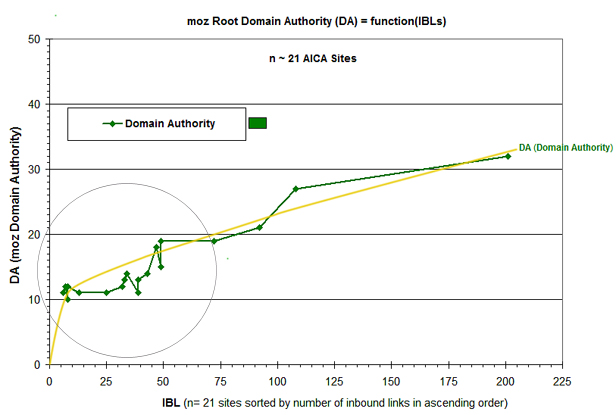Natural Link Building in 2013
SEO Strategies for Increasing Visit Rates:
History:
Natural Link Building remains an important SEO strategy in 2013 for increasing moz Domain Authority/ Google Page Rank, Organic Search traffic, engagement, and ultimately conversions. Over the history of the internet – and in particular with the advent of Google’s Jagger, Panda/ Farmer, and Penguin Search Algorithm updates – link building as an SEO strategy, has undergone some incredible twists and turns.
Google is the leading Search Engine, in large part because it has always strived to provide internet searchers with the most relevant information related to their search queries, and to make Google Search, the best internet search experience possible. To that end, Google continues to engineer, ever increasingly, sophisticated search filters and penalties, in reaction to “Black Hat” SEO Strategies still used by many SEO companies, either willfully, or in blind ignorance of the huge impact these algorithms have on search results.
2005 – 2011:
The Jagger update (2005) penalized reciprocal links, paid links, and link farms. The Panda/ Farmer update (2011) which affected over 10% of search results, penalized thin content on content farm sites, as well as pages with a higher ratio of ads to content. This is important especially because it was no longer helpful to develop links from these types of sites and pages, towards improving Domain or PR authority.
2012 – 2013:
The Penguin update (2012 – 2013 and ongoing?) has continued to target paid links and over optimized inbound links. Specifically, links pointing to sites, that have large fractions of their total number of inbound links, containing targeted keywords in the anchor text i.e., for keywords optimized for these sites. Some SEO researchers say penalties begin when ~30% plus of all of the inbound links pointing to the site, contain targeted keywords in the anchor text.
For the first time, Google began filtering or penalizing for what has been to this point, a “White Hat” link building strategy. So where does that leave Natural Link Building as an SEO strategy in 2013 and beyond?
Link Building as an SEO Strategy Today:
A recent Friday white board session given by Rand Fishkin of Moz (Rand has consulted for Facebook,) outlines his current view of link building vs content marketing: SEO’s Dilemma – Link Building vs. Content Marketing – Whiteboard Friday August 9th, 2013. His ideas and command of the subject are undeniable. However, as his firm has consulted for Facebook and social media is his self admitted internet passion, careful attention to his presentation suggests an inclination toward Content Marketing as an SEO strategy.
moz Domain Authority:
Its widely known in the SEO industry, that the moz (formerly SEOmoz) system of ranking web sites according to their proprietary algorithm for PA – page authority and DA – Domain Authority, is a strong indicator (but not the only one,) of how Google values and ranks sites when computing SERPs (search engine results page.) The total number of reputable and links relevant to the web site’s message (content,) is important in determining PAs and DAs. 0 – 100 is the scale for this moz metric, with 100 indicating the maximum authority.
Inbound Links and Domain Authority:
We can see the relationship between the number of inbound links pointing to a web site and its DA, in the response plot below. The plot shows data for 20 plus local search websites owned by one of Blueprint’s clients.
The data for the total number of inbound links for each of 20 or more health care websites, were sorted in ascending order from the lowest to the highest number of inbound links per site. The corresponding DA (moz Domain Authority) for each website is shown along the Y axis. As you can see, there is a significant correlation.
The variations, both up and down from the gold trend line seen starting at about 50 links and below, is most likely explained best by how moz weights or scores the cumulative quality (i.e., link authority) for sites with smaller link sets. Additionally, Domain Authority may not be solely determined by quantity and quality of links to the site.

Natural Link Building:
Its important here, to distinguish between the SEO best practices strategy of “Natural Link Building” and the more general and historical term “Link Building.” Link building generally describes the activity of obtaining inbound links to achieve rankings by any manner possible (hence the occasional negative connotations in some SEO circles.)
Natural Link Building is a tried and true strategy that is supported by Google. For example, Google does not penalize links to relevant directories, moderated by humans. If you have a manufacturing website, its a good idea to submit to Thomasnet.com among others. Your website will accrue “link juice” towards increased rankings, visits, and conversions/ engagement. You will also have added another perfectly natural way for suppliers and buyers to find your website. Thomasnet.com may eventually solicit a listing from your site by phone or email, but why wait? On the other hand, if your web site’s distribution of links is predominantly from directories that may be seen as un-natural, Google may penalize your site.
At Blueprint, we are dedicated to continuous improvement, in order to ensure best web design and SEO practices. We strive to provide original and creative content, designed to be informative and entertaining, that promotes engagement and conversion. Our SEO team is continually developing ways to help build your online ROI.



